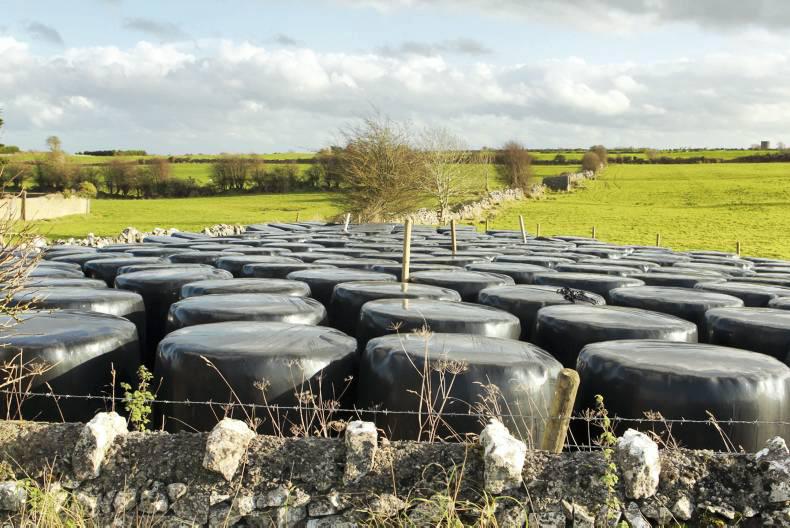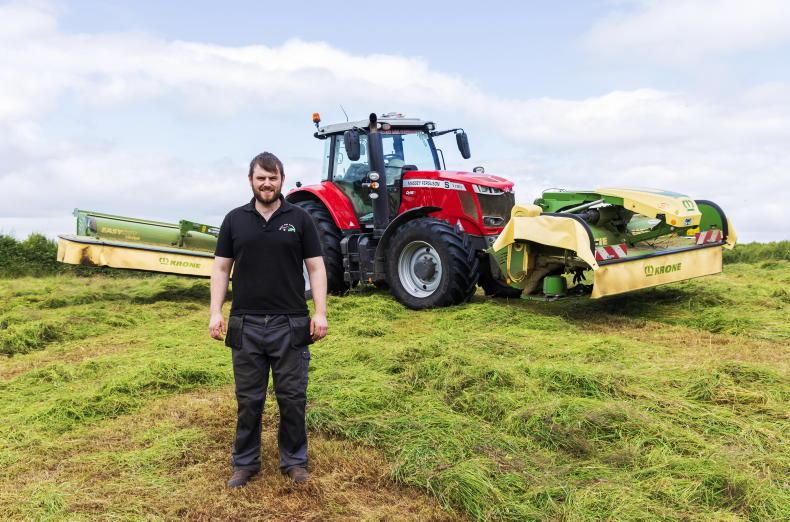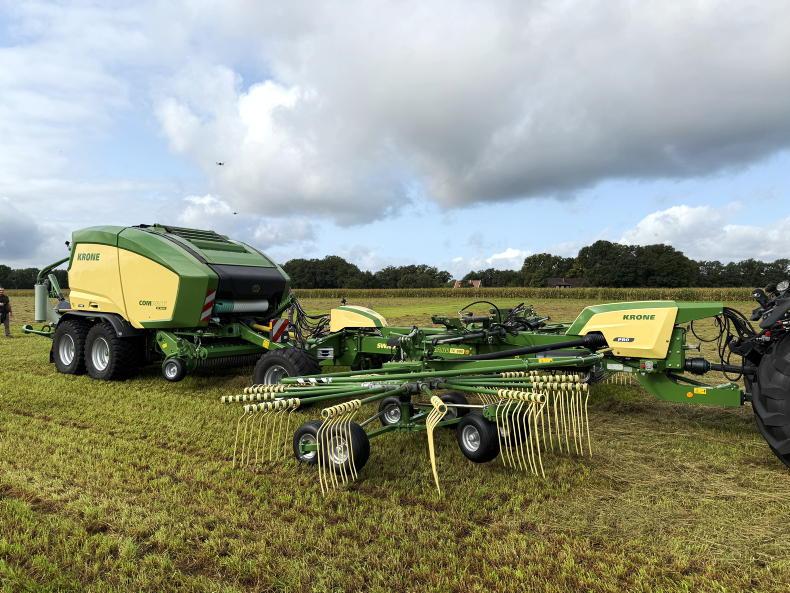Wilting is an important component of making baled silage. That means that some flexibility is needed in your plan to ensure that the meadow can be mown when weather conditions permit good field drying. Because baling, wrapping and transport costs are usually based on a per bale basis there is a lesser penalty for cutting high-quality, low-yielding, grass crops. This feature can be exploited on farms, and encourages conserving good quality grass, where the superior feeding value of a highly digestible bale more easily justifies its ensiling cost.
Mowing
Mowing should be managed to promote effective wilting. The best advice is to mow a meadow after the dew has evaporated. This is because a heavy dew on a high-yielding meadow contributes over three tonnes water per hectare (over one tonne/acre) and surface water usually dries quicker from a standing crop. It is important to try to mow and wilt during a spell of dry, sunny weather.
Wilting
For effective wilting, the more meadow that is exposed to sunshine and air movement, the better. The target should be to bale the grass at about 30% to 35% dry matter (DM). The aim should be to have the mown swath on the ground for preferably one, and at most two, nights. Heavy grass crops might need additional tedding. Where a mower-conditioner is used, the doors or shields at the back of the conditioner should be opened so as to leave the grass in a wide swath. This should give between 60% and 80% ground covered with grass. If you ted grass, do it as soon as feasible after mowing so as to leave the grass exposed to sunshine for the longest possible time. If there is a risk of rain overnight, or if baling is expected to be carried out early the following morning, it may be advisable to windrow the tedded grass before nightfall.
Baling
It is best to make dense, well-shaped bales. These bales will be heavy. However, the reduced number of bales per acre decreases baling, wrapping and transport costs. Well-shaped bales are easier to wrap properly and to handle without causing damage. Get your contractor to adjust the baler density setting to the maximum allowable position. The tractor should be driven so as to provide an even and balanced flow of grass into the bale chamber. That’s why it is advised to use a slow rather than a fast forward tractor speed, to help produce dense, well-packed bales. Experience has shown that balers with fixed knife choppers can fit an additional 8% to 15% more grass into a bale. This will depend on the number and sharpness of knives and grass type. Blunt knives will add considerably to the tractor power needed and the amount of diesel used. They will also lead to more blockages. That’s why choppers are only effective if the knives are sharpened regularly.
Wrapping
The aim with wrapping is to keep air (oxygen) out of the bale. When bales are wrapped in four layers of conventional polythene (plastic) film, the thickness of such plastic on a silage bale is 70µm compared with 250µm for a double-sheeted silage clamp. Since each bale of silage typically has six to eight times the surface area in contact with plastic compared to clamp silage, it is clearly important that the plastic film is of good quality, is properly applied and is not subsequently damaged. Bale wrappers are geared to apply film so that each layer overlaps the underlying layer by 50%. In Ireland, four layers of film are typically used, although in countries such as Sweden six layers are the norm. The number of revolutions of the wrapper turntable needed to ensure a nominal covering by four layers of film (750mm) on a regular, well-shaped bale is about 16 turns. Experiments at both Grange and Oak Park have shown that a minimum of four layers of conventionally applied standard stretch film is required to conserve baled silage adequately. Teagasc believes that where good management practice prevails, the benefits accruing from progressing to six layers of film are small. However, where bales may be stored for a prolonged duration, six layers may be advisable. The production of dense, high dry matter (DM) bales from highly digestible grass, with in excess of 200kg DM per bale, can justify the use of six layers of film. An increase of 25kg DM per bale will pay for two extra layers of film by reducing the number of bales to be baled, wrapped, transported and stored.
Handling and transport
Gentle handling of bales before and after wrapping is essential. You should avoid rough handling of unwrapped bales as this can mishape them. They are then more difficult to wrap perfectly so avoid using a spike if possible. Use simple tubular type bale lifters instead. If the bales are wrapped in the field, then move them to the storage area immediately after wrapping, and certainly within 24 hours. Then immediately repair any damage to the plastic film.










SHARING OPTIONS